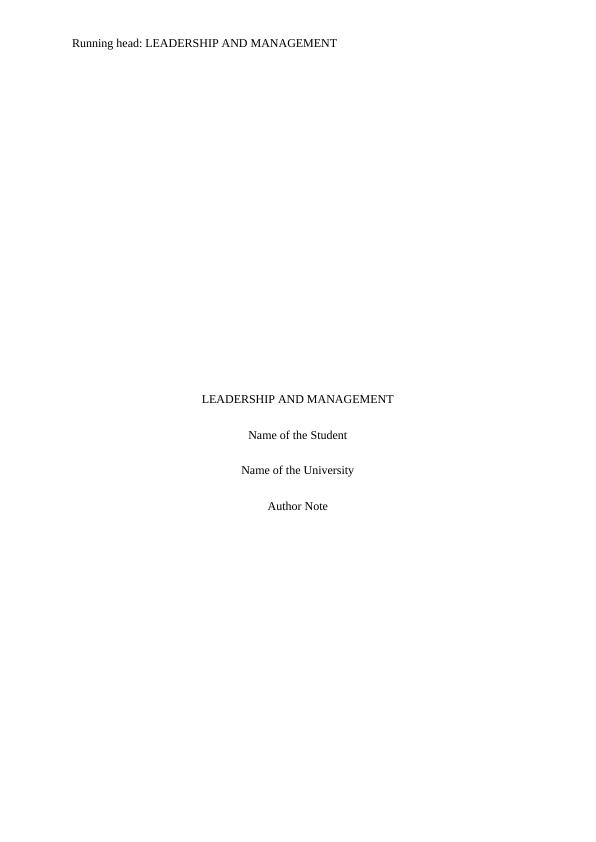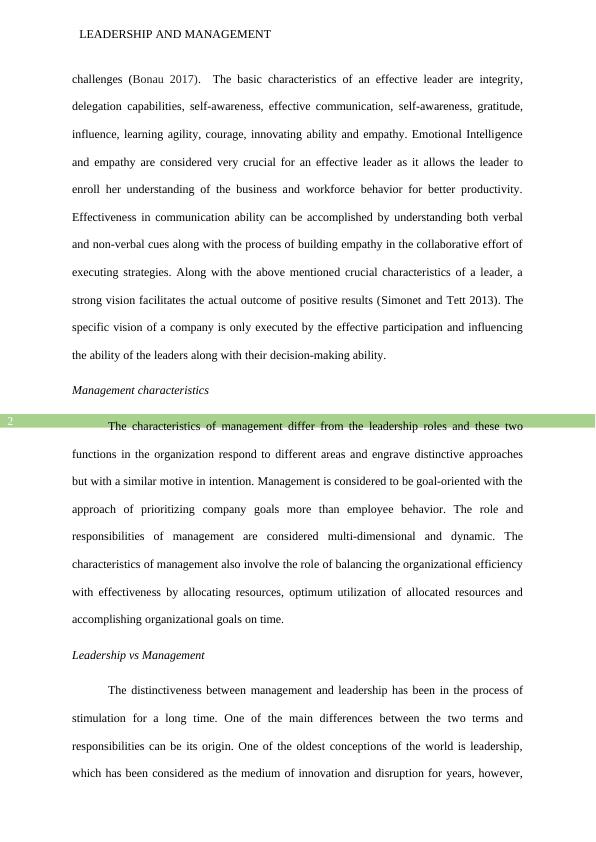LEADERSHIP AND MANAGEMENT
Examine the differences between management and leadership and discuss the role of enterprise leaders in socially responsible organizations.
6 Pages1453 Words24 Views
Added on 2022-09-11
LEADERSHIP AND MANAGEMENT
Examine the differences between management and leadership and discuss the role of enterprise leaders in socially responsible organizations.
Added on 2022-09-11
ShareRelated Documents
End of preview
Want to access all the pages? Upload your documents or become a member.
LEADERSHIP AND CHANGE IN MANAGEMENT
|12
|3153
|23
Leadership Traits
|4
|797
|349
Importance of Emotional Intelligence for Effective Leadership
|11
|2964
|492
The Leadership Experience: Understanding Styles, Theories, and Development
|9
|2971
|448
Individual Leadership
|10
|1041
|243
Leadership and Cultural in Organizations
|16
|4498
|3



